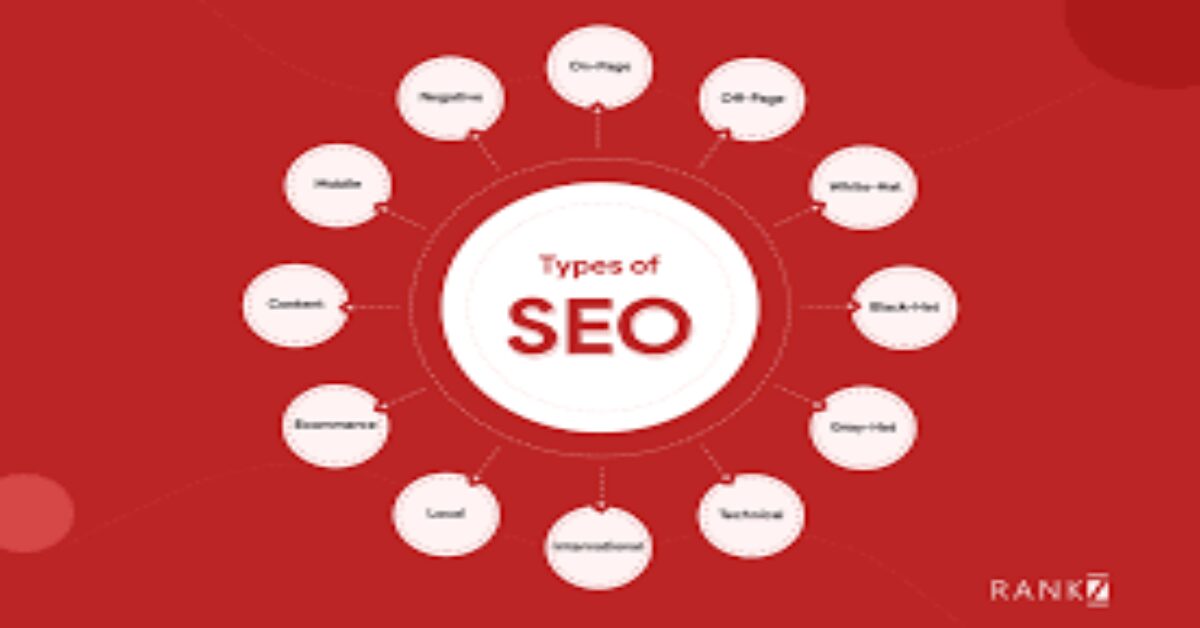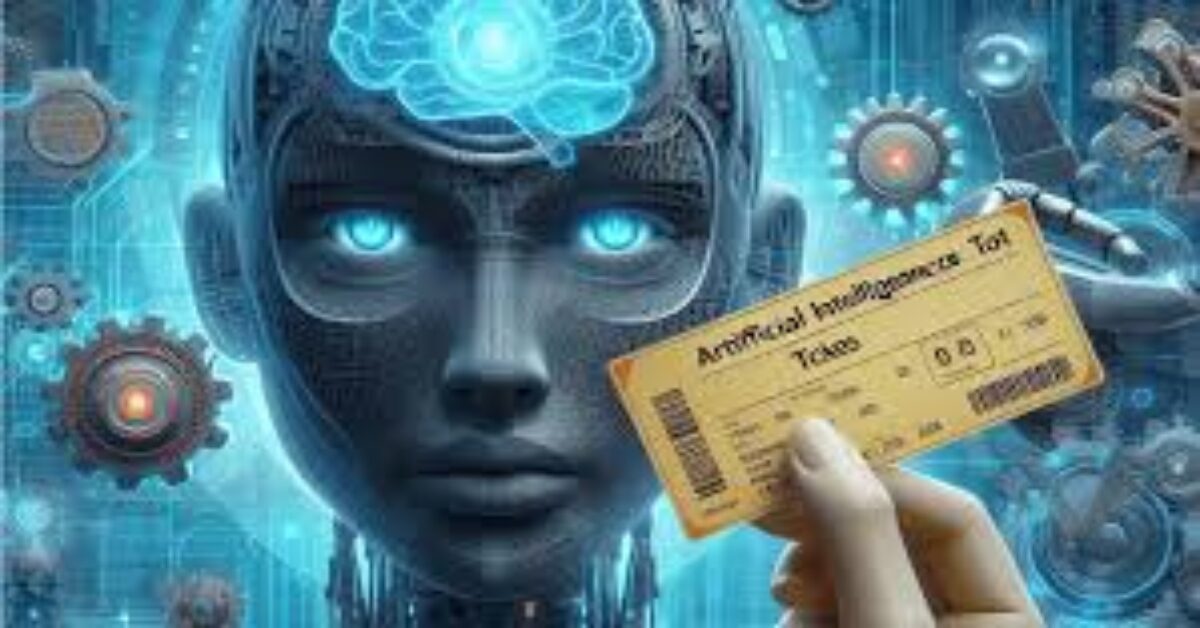Blog
Best 4 types of seo who must apply to rank your sites or business in 2024

Types of SEO
There are many types of SEO(Search engine optimization but firstly you know what is SEO and the difference between SEO from SEM and PPC.
What is SEO?

SEO stands for Search engine optimization. SEO (search engine optimization) is that way which is a technique to rank our sites or speed up our local or high-level businesses on different Search Engines like GOOGLE, BING, YAHOO, and others.
Difference between SEO from SEM and PPC?
SEO, SEM, and PPC are the types of marketing that do not lie in the types of SEO.
SEM and PPC are 2 other very common terms we will read about a lot here in the Search Engine world and hear about in the larger search engine marketing community.
Difference between SEO and SEM
SEO vs. SEM
SEM stands for search engine marketing or it is also very commonly called search marketing.
Search engine marketing is a type of digital marketing. It is a term for the combination of Search Engine Optimization (SEO) and PAY PER CLICK (PPC) activities means that drive traffic via organic and paid searches on your sites.
Simply, search engine marketing is the process of gaining traffic and visibility from different search engines through both types of paid and unpaid ways…
So how is SEO different from SEM? Technically these are not different – Search Engine Optimization SEO is simply ½ of SEM:
- Search Engine Optimization (SEO) = driving organic traffic from search engines.
- Search Engine Marketing (SEM)= driving organic and paid traffic from search engines.
Now, this is where many things get a bit confusing.
In the current situation, many people use Search Engine Marketing interchangeably with pay-per-click PPC.
For example;
Search Engine Optimization is marketing, just like PPC is marketing.
Here’s this is the best way to learn about SEO and SEM:
Imagine Search Engine Marketing is a coin. Search Engine Optimization is one side of that coin. PPC is on the flip side.
SEO vs. PPC
PPC stands for pay-per-click. This is a type of digital marketing where advertisers are charged whenever one of their ads gets clicked on.
For example;
Imagine Search Engine Marketing is a coin. Search Engine Optimization is one side of that coin. PPC is on the flip side these are two sides of the same coin – SEO is the unpaid side, and PPC is the paid side.
Types of SEO;
There are many types of SEO but we discussed the main 7 types which are as follows;
1. ON-PAGE SEO:

On-page SEO(SEARCH ENGINE OPTIMIZATION) (also called on-site SEO) is the process of optimizing websites and their content on websites for both search engines and users. It can help to easily rank pages higher on Google and other search engines and drive more organic traffic to your site.
Some common types of tasks involved in on-page SEO like optimizing for search intent, title tags, internal links, and URLs. This is a difficult type for all types of SEO.
Speeding up your websites
Speeding up your websites also lies in types of SEO. In a modern world where everything is fast and everyone is in a hurry there a slow-loading website will not stay alive. In the modern world, a slow-loading website is one of the most frustrating things. When a page takes time to load, then the users will not be willing to wait; So the users will just move to another site, then increase your page bounce rate, effectively.
Websites can be boosted by cutting down on redirects, compressing images, and avoiding using custom fonts. With the help of fast websites, your page bounce rate should be improved and help to achieve your marketing targets.
Keywords Research
Keyword research is the foundation of SEO. Today, keyword research is not just related to SEO, but it has been linked with optimization for a very long time. Keyword research is an essential part of digital marketing since keywords should always act as a guide for any excellent digital marketing strategy at any stage. Fortunately today for digital marketers, there are many keyword research tools available like Ahref, Moz, Keyword research, ubersuggest, keyword suffers, and many more.
2. OFF PAGE SEO

Backlinks generated for your site are called off-page SEO. This is the easiest type of all types of SEO
There are many types of Backlinks which are as follow;
- Profile Submission
- Web 2.0
- Social submission
- Media submissions
- Citation submissions
- Blog commenting
3. LOCAL SEO AND YOUTUBE SEO
Local SEO and YouTube SEO are two different types of SEO. These types of SEO are commonly used to grow local businesses and others are for YouTube channels;
Local SEO is a way to speed up small businesses or local shops. Local SEO is a search engine optimization (SEO) strategy that helps to grow or increase the visibility of our business in local search results on different search engines like GOOGLE. Any business that contains a physical location or provides services in different areas can benefit from local SEO. If anyone searches on Google for any important keywords about your business then the map with 3 listings appears underneath it, so in those conditions, local SEO can help you grow your business. Firstly, you know how Google works then to understand local SEO.
In YouTube videos, when your digital marketing strategy is involved then it only makes them optimize as well. After all, YouTube videos almost always get much better ranks on Google compared to other platforms. So optimize your YouTube videos by adding video titles, thumbnails, descriptions, and length, as they all contribute to making your content more visible on Google. YouTube SEO is much easier to compare to other platforms.
4. Guest Posting
These types of SEO are like guest posting. Some people commonly say the SEO technique of guest posting is dead, but they are completely wrong. Guest posting is a main potent tool of digital marketers in their techniques. When you post on other websites, then your content or your brand presents in front of a new audience. On the other hand, accepting guest posts will allow you to benefit from the traffic that the followers of guest posters will bring when they check out the content their favorite blogger published on your website. If they like your content then they become regular visitors to your site.
Related to: 9 Best Secret Websites to Make Money in 2024
Technology
“Power BI vs Tableau: Which Reigns is Best or Supreme in 2024?”

Introduction to Power BI vs Tableau:
In the world of information visualization and analytics, Power BI vs Tableau stand out as two of the most unmistakable gadgets. Each has its qualities and lacks, catering to contrasting needs and inclines. Understanding the contrasts between Power BI and Tableau is pivotal for making an instructed choice about which contraption best suits your necessities.
Background of Power BI and Tableau:
Both Power BI and Tableau have picked up broad ubiquity over a long time, revolutionizing how businesses analyze and visualize information. Control BI, created by Microsoft, entered the showcase in 2013, whereas Scene, established in 2003, has been an overwhelming player for longer. In spite of their varying timelines, both apparatuses have advanced altogether, joining progressed highlights and functionalities.
Purpose and Functionality:
Power BI and Tableau serve the common reason for changing crude information into noteworthy experiences. In any case, they utilize unmistakable approaches to accomplish this objective. Control BI, profoundly coordinates with the Microsoft environment and offers a consistent network with Exceed expectations, SQL Server, and other Microsoft items. On the other hand, Scene gloats a more instinctive and user-friendly interface, making it a favorite among information visualization devotees.
Cost and Licensing Models:
Taken contemplations play a noteworthy part in the decision-making handle for businesses assessing Control BI vs. Scene. Control BI offers a run of estimating alternatives, counting a free form with restricted highlights and subscription-based plans for people and endeavors. The scene, in the meantime, takes after a layered estimating structure, with diverse estimating levels based on the highlights and functionalities required.
Data Connectivity and Integration Capabilities:
The capacity to interface to and coordinated with different information sources is a vital angle of any information analytics apparatus. Control BI and Scene back a wide run of information connectors, empowering clients to get to information from different sources such as databases, cloud administrations, and spreadsheets. In any case, Control BI’s local integration with Microsoft items gives it a competitive edge for organizations intensely contributed in the Microsoft environment.
Visualization Capabilities and Customization Options:
The adequacy of an information visualization device pivots on its capacity to make compelling and quick visualizations. Both Control BI and Scene offer plenty of visualization choices, counting charts, charts, maps, and dashboards. Whereas Control BI gives a strong set of visualization devices, Scene exceeds expectations in terms of adaptability and customization, permitting clients to make exceedingly intuitive and energetic visualizations.
Learning Curve and User Experience:
Blog
Artificial Intelligence Ticketing: Best Your Shortcut to Smarter Operations in 2024
Blog
Quantum Artificial Intelligence Elon Musk in 2024: Pioneering the Future.

Quantum Artificial Intelligence Elon Musk
In cutting-edge technology, the fusion of quantum mechanics and artificial intelligence (AI) stands at the forefront of innovation. Quantum Artificial Intelligence Elon Musk represents a paradigm shift in computing capabilities, with the potential to revolutionize industries ranging from healthcare to finance. At the helm of this transformative journey is the visionary entrepreneur, Elon Musk.
Introduction to Quantum Artificial Intelligence (QAI)
Quantum Artificial Intelligence harnesses the principles of quantum mechanics to perform complex computational tasks beyond classical computers’ reach. Unlike classical bits, which can only exist in a state of 0 or 1, quantum bits or qubits can exist in multiple states simultaneously, enabling exponential leaps in processing power.
Understanding Quantum Computing Artificial Intelligence

To comprehend the significance of QAI, one must grasp the fundamentals of quantum computing. Quantum computers leverage phenomena such as superposition and entanglement to perform computations at unparalleled speeds, solving problems that would take classical computers eons to crack.
Applications of Quantum Computing Artificial Intelligence
The applications of quantum computing Artificial Intelligence span a myriad of fields, including cryptography, drug discovery, and optimization. Quantum cryptography ensures secure communication channels, while quantum algorithms expedite the discovery of life-saving drugs and streamline logistical operations.
Challenges in Quantum Computing Artificial Intelligence
Despite its immense potential, quantum computing faces formidable challenges such as error correction, scalability, and quantum decoherence. Overcoming these hurdles is essential for realizing the full capabilities of QAI.
Elon Musk’s Interest in Quantum AI
Quantum Artificial Intelligence Elon Musk, the maverick entrepreneur behind Tesla, SpaceX, and Neuralink, has long been vocal about the potential risks and rewards of artificial intelligence. His foray into quantum AI underscores his commitment to pushing the boundaries of technological innovation.
Tesla’s Potential Integration with Quantum AI
Tesla’s pursuit of autonomous driving technology could benefit immensely from the integration of quantum AI. The intricate decision-making processes involved in self-driving cars could be optimized using quantum algorithms, enhancing safety and efficiency on the roads.
SpaceX and Quantum AI
SpaceX, Musk’s aerospace venture, could leverage Quantum Artificial Intelligence Elon Musk to revolutionize space exploration. From trajectory optimization to data analysis, quantum algorithms could bolster the capabilities of SpaceX missions, propelling humanity further into the cosmos.
Neuralink and Quantum AI
Neuralink, Musk’s ambitious venture to merge the human brain with AI, presents intriguing possibilities for synergy with quantum computing. The marriage of Quantum Artificial Intelligence Elon Musk and brain-computer interfaces could unlock new frontiers in human cognition and machine learning.
OpenAi and Quautum AI Research

As the founder of OpenAI, Musk has championed the cause of AI research and development. Collaborations between OpenAI and quantum computing experts could pave the way for groundbreaking advancements in AI capabilities.
Implications for the Future
The advent of Quantum Artificial Intelligence Elon Musk heralds a new era of innovation and disruption. From personalized medicine to climate modeling, Quantum Artificial Intelligence has the potential to address some of humanity’s most pressing challenges while raising ethical questions about its implications.
Conclusion
In conclusion, Quantum Artificial Intelligence Elon Musk underscores his visionary approach to technological advancement. By harnessing the power of quantum computing, Musk aims to push the boundaries of AI capabilities and propel humanity into a future limited only by imagination.
Unique FAQs
How does quantum AI differ from traditional AI?
- Quantum AI leverages the principles of quantum mechanics to perform computations at exponential speeds, whereas traditional AI relies on classical computing architectures.
What are the main challenges facing quantum computing?
- Error correction, scalability, and quantum decoherence are among the primary challenges impeding the widespread adoption of quantum computing.
How could quantum AI impact everyday life?
- Quantum AI could revolutionize industries ranging from healthcare to finance, enabling breakthroughs in drug discovery, financial modeling, and personalized medicine.
What role does Quantum Artificial Intelligence Elon Musk?
Elon Musk’s ventures, including Tesla, SpaceX, and Neuralink, are at the forefront of exploring the potential applications of quantum AI in various domains.
Are there any ethical concerns surrounding quantum AI?
- Ethical considerations, such as data privacy, algorithm bias, and the potential for job displacement, must be carefully addressed as quantum AI technologies continue to evolve.
Exploring Quantum Artificial Intelligence Elon Musk’s Vision

The Intriguing Intersection of Quantum Mechanics and Artificial Intelligence
Quantum Artificial Intelligence (QAI) stands as a testament to human ingenuity, merging the abstract principles of quantum mechanics with the practical applications of artificial intelligence. Traditional computing, based on classical physics, has its limitations, particularly when faced with immensely complex problems. Quantum computing, however, offers a tantalizing glimpse into a realm where computation occurs at the quantum level, opening doors to unprecedented computational power and efficiency.
Elucidating the Enigma: Quantum Computing Artificial Intelligence Principles
At the heart of quantum computing Artificial Intelligence lies a set of principles that defy conventional understanding. Concepts such as superposition and entanglement form the bedrock upon which quantum algorithms operate. Superposition allows qubits to exist in multiple states simultaneously, while entanglement links the states of qubits, enabling instantaneous correlation across vast distances. These phenomena, seemingly paradoxical, underpin the extraordinary capabilities of quantum computers.
Unveiling Quantum Computing’s Multifaceted Applications
The applications of quantum computing Artificial Intelligence extend far beyond theoretical speculation, manifesting in tangible advancements across various industries. Quantum cryptography, for instance, leverages the inherent security of quantum systems to safeguard sensitive information against prying eyes. Similarly, quantum algorithms hold promise in accelerating the discovery of novel pharmaceutical compounds, revolutionizing drug development pipelines, and improving patient outcomes.
Navigating the Treacherous Terrain: Challenges in Quantum Computing Artificial Intelligence
Despite its immense potential, the path to practical quantum computing is fraught with challenges. Error correction mechanisms are paramount, as quantum systems are inherently susceptible to noise and interference. Moreover, scalability remains a pressing concern, with current quantum hardware struggling to accommodate the demands of large-scale computations. Quantum decoherence, the bane of quantum systems, poses yet another obstacle, threatening to unravel delicate quantum states before useful computations can be completed.
Elon Musk: A Trailblazer in the Technological Landscape
Elon Musk’s endeavors transcend the boundaries of conventional industry, epitomizing the spirit of innovation and disruption. From electric vehicles to space exploration, Musk’s ventures have redefined what is possible in their respective domains. Central to Musk’s ethos is a steadfast commitment to advancing technology for the betterment of humanity, a principle that extends to the realm of artificial intelligence and quantum computing.
Tesla: Spearheading the Automotive Revolution with Quantum AI
Tesla, under Musk’s visionary leadership, has emerged as a pioneer in the realm of autonomous driving technology. The integration of Quantum Artificial Intelligence holds immense promise for Tesla’s self-driving endeavors, enabling real-time decision-making and adaptive learning capabilities that far surpass the capabilities of traditional AI systems. By harnessing the power of quantum computing, Tesla aims to revolutionize transportation and redefine the concept of mobility.
SpaceX: Pushing the Boundaries of Space Exploration with Quantum AI
SpaceX, Musk’s audacious aerospace venture, is at the forefront of humanity’s quest to explore the cosmos. Quantum AI, with its unparalleled computational prowess, could prove instrumental in optimizing spacecraft trajectories, analyzing vast datasets from space probes, and enabling autonomous navigation systems for future Mars missions. By embracing quantum computing, SpaceX endeavors to unlock the mysteries of the universe and pave the way for interplanetary exploration.
Neuralink: Bridging the Divide Between Mind and Machine with Quantum Artificial Intelligence Elon Musk
Neuralink, Elon Musk’s enigmatic brain-computer interface startup, seeks to merge the human brain with artificial intelligence. The potential synergy between Neuralink and Quantum AI is tantalizing, offering unprecedented insights into the inner workings of the mind and the potential for symbiotic relationships between humans and machines. By harnessing quantum computing power, Neuralink aims to unlock new frontiers in cognitive enhancement and human-machine interaction.
OpenAI: Charting the Course for Ethical AI Development with Quantum Computing
As the founder of OpenAI, Elon Musk has been a vocal advocate for responsible AI development. OpenAI’s collaborations with quantum computing experts signify a concerted effort to ensure that the benefits of Quantum Artificial Intelligence are equitably distributed and ethically governed. By fostering interdisciplinary research and promoting transparency in AI development, OpenAI aims to shape a future where quantum computing serves as a force for good in society.
Conclusion: Navigating the Quantum Frontier with Elon Musk
In conclusion, Quantum Artificial Intelligence Elon Musk represents a convergence of scientific inquiry and technological innovation, with the potential to reshape the fabric of our reality. Elon Musk’s visionary leadership and unwavering commitment to pushing the boundaries of human achievement have positioned him at the forefront of this quantum revolution. As we embark on this journey into the unknown, guided by the principles of curiosity and exploration, we stand poised to unlock new realms of possibility and usher in a future limited only by the bounds of our imagination.
Related to: Unveiling the Magic Why is AutoBlogging.ai the best AI writing tool in 2024?







